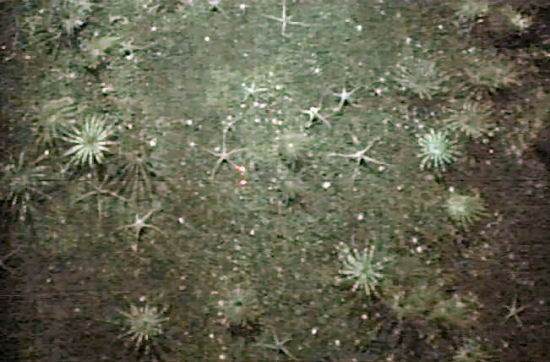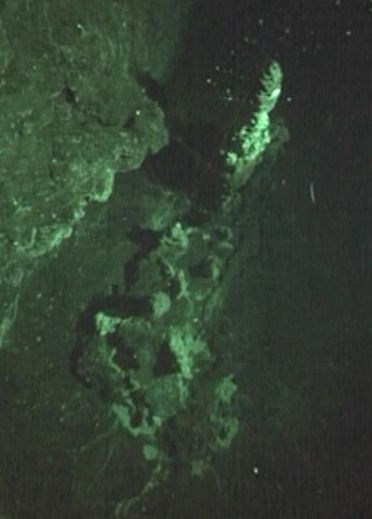Friday 11th February
Today's contributor: Jon Copley
This morning we moved to "Adventure Caldera", another crater-like seafloor feature near the South Sandwich Islands, which was discovered by geophysicists from the British Antarctic Survey last year.
On arriving at the crater, we deployed the CTD probe to look for signs of deep-sea vents. There were no apparent signals, but nevertheless we launched the SHRIMP camera system to inspect the general marine life of the crater for comparison.
While towing SHRIMP below us, we passed over beds of small Antarctic clams, and patches of free-living crinoids, relatives of brittle stars that can swim using their feather-like arms.

Brittle stars and their crinoid cousins
After three hours we decided to extend our survey, plotting new track lines and leaving PhD students Leigh, Will and Santiago in charge of SHRIMP operations while senior staff met to discuss our final science plans.
Our meeting was interrupted by the message that the SHRIMP team had found deep-sea vents. Everyone scrambled to the control van to see slender mineral spires, around three metres tall, with shimmering hot water gushing from their peaks, and gossamer-like white mats of bacteria coating their sides. The vents are at a depth of 520 metres on the slopes of an undersea knoll towards the edge of the crater.

Aerial view of vent chimneys
Leigh describes the moment of discovery here.
This is the fourth set of deep-sea vents that we have discovered (or in this case, that our PhD students have discovered!) during three expeditions in the Southern Ocean. Two of these new vent fields are in seafloor craters, rather than on mid-ocean ridges where vents are traditionally found.
